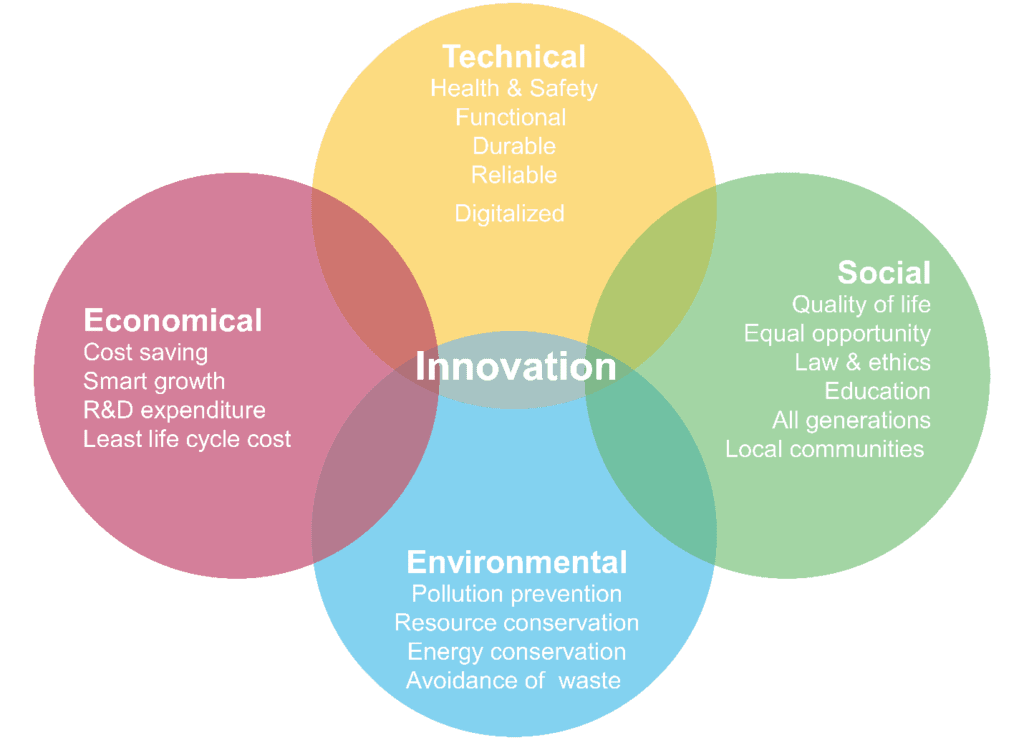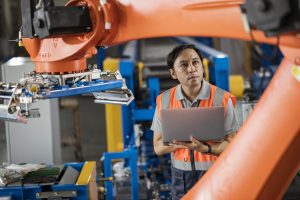MV equipment sustainability depends on environmentally conscious design values
Climate change action is more urgent than ever. We can all focus on ways to cut carbon emissions in both how we live and the products we use. For medium voltage (MV) installations, this requires contributing to sustainable development goals, encouraging a circular economy that maintains value while ensuring circular material flows, and adopting ways to minimize products’ environmental footprint.
Circular economy is a model of production and consumption that focuses on reducing, reusing, and recycling materials and parts, and on product refurbishment to prolong resource use by extending its useful life.
Circular economy begins with an environmentally conscious product design. If the design does not include environmental considerations from the start, it becomes difficult to improve the product’s environmental performance. Environmental performance could include, for example, its carbon footprint, or the durability of its material and parts.
One of the challenges to sustainable MV installations is that the environmental aspects of design have often not been specified. That’s because MV equipment, like many manufactured products, must first prioritize the values created through their functionalities and safety at the origin of technical features and ratings. The trade-offs between those criteria must be optimized when designing the functions required by every stakeholders along the product’s lifecycle. This creates the value of environmentally conscious design, such as to ensure the equipment is Safe and Sustainable by Design.

These are the most important focus areas when designing for circular economy
To optimize circular economy, the MV installation design stage should focus on:
- avoiding hazardous substances and their waste during material selection, and avoiding direct substance emissions into the environment (air, water, soil) during all life phases
- minimizing resource use, avoiding use of critical raw materials, and increasing the percentage of recycled material content
- avoiding any adverse environmental impact
- extending product lifespan and improving end-of-life treatment by reusing any materials or parts before they reach their end of use; if applicable, remanufacture, recycle, and recover
- implementing supply chain loops to collect and ensure the future lives of products, parts, and materials
Circular design brings other benefits including savings and competitive advantage
An MacArthur Foundation report found that the EU manufacturing sector could realize net materials cost savings of up to $630 billion per year by 2025 by using a circular economy approach.
It is also a draw for customers. Companies that prioritize sustainability now will benefit from being at the forefront of an environmentally conscious transformation. It’s already clear that end users and partners want sustainable products. Research consistently finds that customers factor their purchases’ environmental impact into their decision making. For instance, a World Economic Forum survey found that over 80% of consumers think it’s “important or extremely important” that companies design environmentally sustainable products.
It also prepares MV equipment manufacturers for current and future regulations
There are a number of regulations, standards, and goals (either already established or in the works) that will require MV equipment manufacturers to improve sustainability. These include safety aspects for protecting people, with the focus on substances and chemicals (RoHS directive or Reach regulation in Europe), and the environment with the European Ecodesign Directive, and the UN’s Sustainable Development Goals.
While some regulations already focus on material efficiency (packaging, waste, etc.) and have been deployed in most regions, other regulations will be expanded to consider the circular economy, including resource efficiency and business models. This is similar to how the EU reinforces its carbon pledge.
By focusing on an environmentally conscious design now, manufacturers can meet current rules and prepare for future regulations. For example, cost and CO2 savings are important due to their contribution to climate change (GWP) and will increasingly be linked to a regulatory framework.
Discover how our innovative MV switchgear design eliminates SF6 use
We are proud to be trailblazers in sustainable MV switchgear. Rather than using the greenhouse gas SF6, we’ve designed SF6-free MV switchgear that uses only pure air and vacuum technology for breaking and insulation. It has all of the benefits of traditional switchgear but without the environmental drawbacks of using a greenhouse gas. Learn how our customers, such as E.ON, EEC Engie, and Green Alp, are already benefiting from our new green and digital switchgear.
We support the transition to more sustainable MV equipment
Partners can rely on us to help them build a more sustainable future through all stages of their equipment and services projects. We’re fully committed to a more sustainable future for our customers and our own business. That’s why we’re investing heavily in more sustainable products across their lifecycle, including design, manufacturing, first use and circulation of materials for resource conservation and future uses. These initiatives helped our customers save 1 million tons of CO2 in 2021.
Download our free MV technical guide to learn how to create more sustainable designs
Access our free MV technical guide for an in-depth look at how your MV installations will benefit from more environmentally conscious designs. For example, the guide describes how MV installation design could be affected by the UN’s Sustainable Development Goals, which are designed to be “a blueprint to achieve a better and more sustainable future for all.”



